Which radiator to choose: type of heat energy transfer, used
Which heating radiator is better to choose for installation in a house or apartment - definitely not a single heat engineering specialist can say. The thing is that there are many different models of such devices on the market, and each of them has its own operational features.
And yet in our article we will try to describe the pros and cons of heating devices, and also give recommendations on how to install them in certain conditions.

Principal differences of products
Type of heat transfer
Analyzing the types of devices on the market, it is necessary to understand what their main differences are.
The main principle here will be the principle of heat transfer, according to which heating devices are divided into radiators and convectors proper:
- Radiators have about 80-90% of the energy of the coolant transferred to the room due to radiation. This means that at first the internal environment of the battery heats up, then its walls, after which the radiator surface radiates infrared heat waves, which give energy to the surrounding air and objects in the room.
Note! The efficiency of such devices is not too dependent on the speed of the coolant and the difference between its temperature and the ambient temperature. That is why radiators prefer to install in systems with natural circulation.

- Convectors also radiate heat, but the share of this radiation from them is much less - at the level of 10-20%. The main part of the heat transfer occurs in convection - the movement of air between the plates of the heat exchanger, due to the temperature difference. At the same time, cold air enters the battery from the bottom side, passes through the fins heated by the coolant, and comes out in the upper part, ensuring continuous circulation.
- Universal solution are devices of mixed type.. They are designs from tubular tanks with hot water, on the surface of which heat exchange ribs are installed. Such devices provide efficient heating in almost all parameters of the heating system.
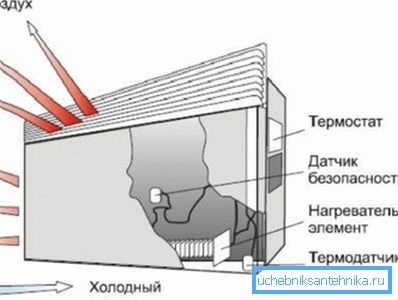
Used heat carrier
When deciding which radiator to choose, you need to take into account the peculiarities of an existing heating system:
- If you have a boiler installed, then naturally you need to purchase water batteries. They work by heat transfer from hot water that flows through the pipes of the heating circuits due to natural or forced circulation.
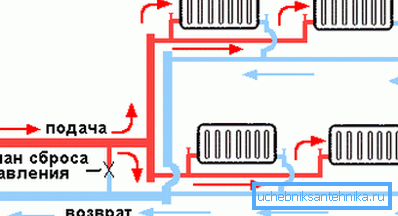
- If the boiler and pipes there, then the only solution would be to use electrical heating. Electric radiators (most often working on an oil coolant), convectors and fan heaters provide quick heating of the air, but at the same time cool down very quickly, so that to maintain an optimal microclimate at least some of them must always be in the on state,
- There is another aspect associated with the feasibility of electrical heating. If we need to choose - which oil cooler or electric convector will be installed, then we must take into account the parameters of the electrical network of our house. The fact is that the power consumption of such devices is quite high (on average from 500 W to 3 - 4 kW), so that the wiring of all heaters at the same time can simply not withstand.

However, it is not at all necessary to be limited to one option. Today, more and more often, the installation of hybrid heating systems is practiced: in the autumn-spring season, oil radiators or fan heaters are used, and in winter, when it is necessary to be heated all the time, they switch to water batteries powered by a gas or solid fuel boiler.
The final decision in this matter depends on you, and to be completely accurate - on the cost of various types of fuel in your area. Sometimes it is much more profitable to install more expensive equipment, but at the same time compensate for the costs due to savings on heat carriers.
Selection options
Material
In addition to the concept of radiators, the manual also recommends paying attention to the material from which these structures are made. Thermal parameters of products largely depend on this.

Below we provide a table by which you can compare batteries from different materials:
| Type of radiators | pros | Minuses |
| Cast iron |
|
|
| Steel |
|
|
| Aluminum |
|
|
| Bimetallic |
|
|
Operating pressure
Another important parameter to consider when choosing radiators is the operating pressure in the system. And if this is not so relevant when reconstructing the heating network of a private house, then in general-house networks, it is necessary to take into account such a procedure as pressure testing - a short-term increase in pressure to detect leaks in the network.
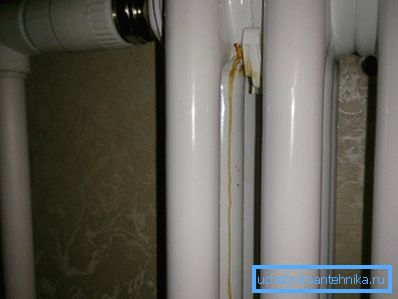
If you plan to install radiators in the apartment of a multi-storey building with your own hands, then you need to keep in mind that products made from different materials can withstand different maximum pressure:
- Cast iron - up to 16 atmospheres.
- Steel - up to 10 atmospheres.
- Aluminum - up to 16 atmospheres.
- Bimetallic - up to 35 atmospheres.
It is on these numbers that you need to be guided, selecting devices in accordance with the parameters of the general house system.
Power
The key factor determining how efficiently the device will function is the power of the battery. This means that for heating the room we need a certain number of radiators, otherwise the heat exchange simply will not take place with the desired efficiency, and the room will be cold.

When deciding which aluminum radiator to choose for installation in a room (the same applies to steel, and cast iron, and bimetallic models), you need to know:
- Heat transfer of the device itself (or heat transfer of a separate section).
- The need of the room is warm.
The first parameter is a constant characteristic of the product, because it is usually indicated either in the passport or on the manufacturer's website.
But the need for heating is calculated by calculation:
- To begin, determine the volume of the room, multiplying the area by the height.
- Then the resulting figure is multiplied by 41 W (the normative coefficient for the territories of the Russian Federation located in the temperate zone).
- In some cases, a correction factor must be added to the result, which will compensate for heat losses. Most often for each window take 100 watts, for the front door - 200-300 watts.
Note! If you plan to close the radiators with screens, then their heat transfer will decrease by 20-25%, which also needs to be taken into account.
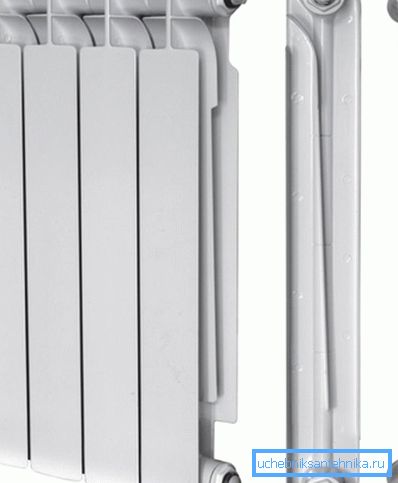
As a result, we get a number that characterizes the amount of heat consumed by the room per unit of time. We divide this number by the heat output of the radiator section or heating panel, and we get the number of heating elements we need.
At the same time, experts recommend doing the calculation with a small margin. In this case, the radiators, even in extreme cold, will not work at the power limit, which will have a positive effect on the resource of the system as a whole.
Dimensions
Finally, when choosing a device for installation in a room, we need to determine its size. It is very important that the heating battery is correctly mounted - then almost all the energy consumed will be redirected to the heating of the air.
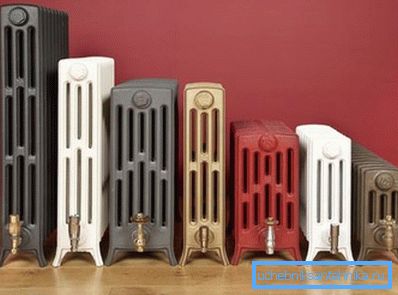
If the radiator is installed simply on the wall, then there are no special restrictions - if only it more or less fit into the interior and does not interfere with the passage.
But when installing under a window sill or in a niche, you need to consider the following:
- First, the optimal battery width should be 50-75% of the width of the window opening.
- Secondly, between the side walls of the radiator and the slopes of the niche should remain at least 100-150 mm of free space.
- The distance from the bottom edge of the battery to the floor is 100 - 160 mm.
- The gap between the top edge and the sill is 120 - 160 mm.
- Removal of the radiator from the wall - 20 - 60 mm.
Note! If the window sill completely blocks the battery, then in the window sill you need to make ventilation holes, otherwise warm air will not fall on the glass, and in the cold season this area will become a place of active condensate formation.
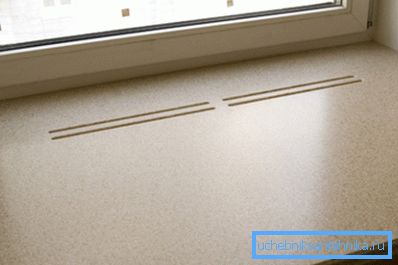
Applying all these restrictions, we get the maximum size of the battery that can be installed at the selected point.
Conclusion
It’s pretty easy to figure out which radiator is better to choose in a given situation. Still, you need to take into account several factors, so for a more detailed study of the nuances of selection, we advise you to view the informative video in this article.